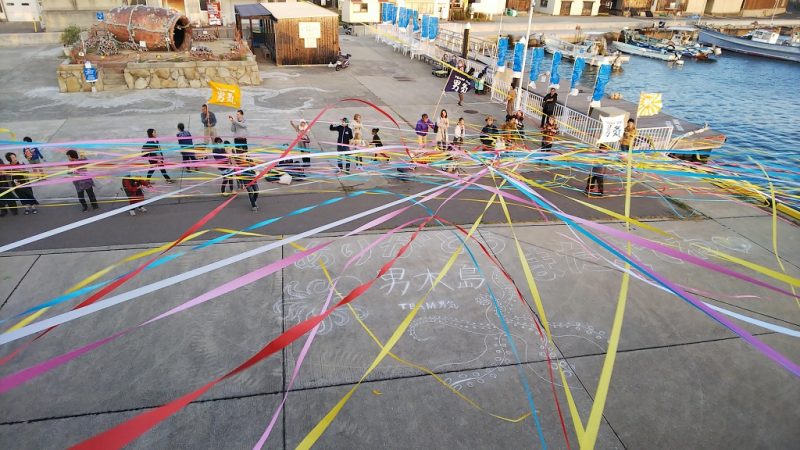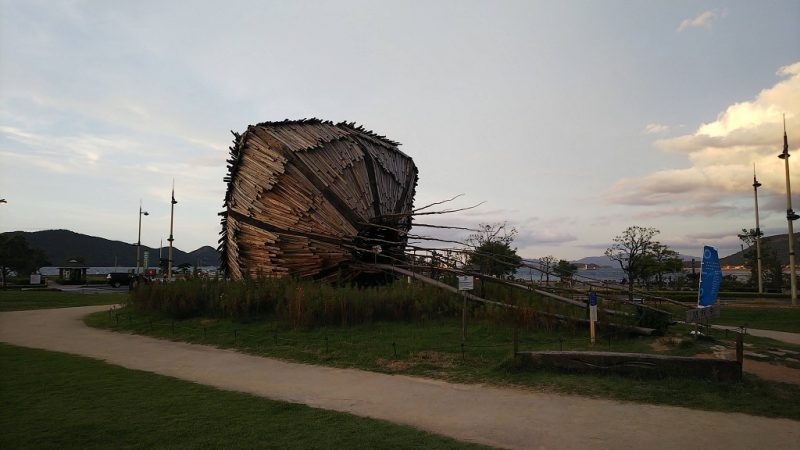
So, that’s it. The Setouchi Triennale 2019 has ended.
It’s been a long but great year with so many things happening. First of all, sorry for having been quiet on the blog for so long (probably the longest since I started it), but during the past two months, I pretty much had no time to write, partly due to the Triennale itself.
The good news is that now, I will have more time to show you all the things I have yet to show you about the art festival.
Also, I will need to update a few pages on the site, but it will take time, so bear with me. Remember, while the Setouchi Triennale 2019 is over, Art Setouchi never stops. However, I don’t have all the information yet about what will stay open and when. Just know that between now and next spring, all of the art on Naoshima and Inujima as well as most of the art on Teshima will remain available, whereas, on the other islands, everything is closed until March 2020 when some permanent artworks will reopen, usually on weekends. Of course, permanent outdoor artworks are always viewable.
OK, I’m not going to blabber too long right now, I should use that time to start updating a few things, don’t you think?

Hi David. We made it for some of it. Our feelings are mixed. We thought Ogi was weak. We’re older than most visitors and found it arduous walking up and down, taking our shoes on and off. The works were overall just average. Megi had pretty much the same works as when we visited it two years ago. Shodishima was the best. Enough good, interesting projects, but a few of them were very far from the ports. Hiring a taxi for half a day two days worked out, but it would be arduous to rely on anything else. I have the impression that you can go anytime and get your fill with what is permanent Nothing beats Naoshima, Teshima and Inujima. What do you think?
Well, I disagree with you. 🙂
Ogijima is my favorite place in Japan if not in the world, and I find Naoshima totally overrated (but it’s a good reservation to park all the mass tourists nowadays), and Inujima of no interest being the Seirensho Museum, and if I love Teshima it’s not because of the art.
Seeing some of your complains (having to take off shows, difficulty to access, etc), I take it that you missed a great part of the experience. I don’t blame you, this is how foreign media have been selling the festival unfortunately, with the inaccurate moniker of “art island”, but the whole point of the festival is to have art on islands, not islands for art, if you see what I mean. The goal of the event is not run after artworks, it’s to discover islands while seeing art at the same time.
I’m actually preparing a future post on this topic.
We have made two trips to Naoshima prior to the Triennale, and if you have the perspective of appreciation of art, there is no better place to experience it. How can you walk away from the Ando architecture, the best conceptual art, the Kasama works, all of which are given heightened spirituality from the land and the sea? The Teshima Art Museum work is among the most arresting I have ever experienced, and I have been to hundreds of museums and galleries throughout much of the world. The Yokoo, Boltanski, the former copper refinery, the Ando Lee Ufan Museum, the Turrell and Walter de Maria works one has to remember longer because of the situation. These are the tourist take-aways. After all, they are all but the total universe of those who set foot there. If only it wasn’t a culinary disaster.
You’re only talking about artworks here. And only the famous names.
What have you learned, what have you seen about the islands? Their people, their cultures, their history, identities? And even if we stick to art, what new artist have you discovered?
Do you see what I mean?
For the “culinary disaster”, I’m utterly confused. You’re talking about food in Japan, here, right?
As one who lives there, your concerns are different than those of an art lover passing through. One can’t devote the time to such matters in every place there is significant art. We have done quite a bit of walking around and observing daily life, but that is secondary for those with limited time. The islands are a tough place to fund good food, The Nari ryokan on Shodoshima is good dining, but at the French restaurant at Benesse House, they put truffle oil on my salad.
As one who live here, I’m telling you that you’ve visited the place with the wrong mindset.
And I’m still confused with your trouble finding good food. It’s almost impossible to find bad food in Japan.
And as a Frenchman, I’m not sure what’s wrong with putting truffle oil on your salad either.
Robert wrote (in the wrong post, so I’m reposting and responding here): “Look up truffle oil and you will see that it is a by-product of petroleum and purely chemical in nature. As an art dealer of serious standing and someone whose brother in an esteemed art historian and the son of parents whose collecting is the subject next year at the Getty Research Institute, I never appreciated art with the wrong mindset. I admit that the two women in Teshima Port who cook fresh fish on a small grill provide a good lunch, but I have been to many of the most revered restaurants in Japan and can say that the art islands are tough going.”
Yes, I know what truffle oil is. I’m from the French South-West. Look it up. Real truffle oil is made with real truffle.
If you came to rural Japan expecting to find the same kind of things you’d find in Ginza, le Marais or whatever part of NYC is trendy right now, I’m sorry, but you came with the wrong mindset, there is no other way around that.
And good food comes in many ways and forms, if you only equate it to three-star restaurants, you’re seriously missing out… Maybe you should try to learn from cultures where food is taken seriously everywhere (not just in fancy restaurants), it’s a shame you were just in Japan. Oh well…